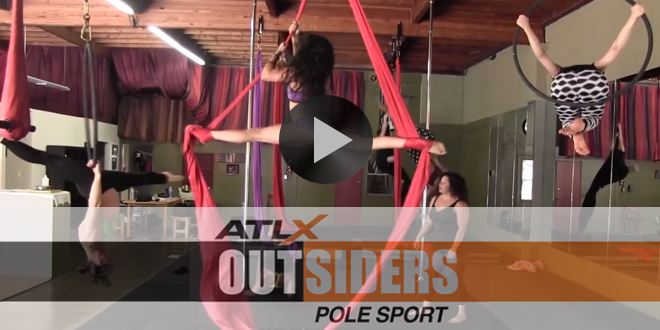By: Sheri Matthews
 Athletes are always looking for ways to evaluate and improve their performance, and in today’s tech world there are so many ways to get the most out of yourself. Here are seven gizmos, gadgets, apps – whatever you want to call them – than can take your training and performance to the next level.
Athletes are always looking for ways to evaluate and improve their performance, and in today’s tech world there are so many ways to get the most out of yourself. Here are seven gizmos, gadgets, apps – whatever you want to call them – than can take your training and performance to the next level.
1. Lunar iDXA Fan Beam Densitometer
A sort-of airport scanner for athletes without the FDA agent pat-down. The IDXA machine, made by GE, allows trainers and coaches to clearly see where an athlete carries fat, muscle and bone. The benefits of knowing this information goes a long way in terms of understanding the effectiveness of an athlete’s training program, and where adjustments need to be made. However, unless you’re going to sign an NFL contract soon, the price tag is going to read pretty steep.
 2. Fitbit
2. Fitbit
It’s a word we all know, but is it worth the hype? For those driven by data, and those into fashion forward fitness, absolutely. When connected to a computer the base station will upload data collected from the device to the Fitbit website, where a number of features are available: seeing an overview of physical activity, setting and tracking goals, keeping food and activity logs, and comparing with other athletes and friends. We are waiting on the lululmeon Athletica yoga fitbit pants. Just wait.
 3. Jawbone and 3.0 App
3. Jawbone and 3.0 App
Move over Fitbit. The Jawbone Up24 fitness tracking wristband works hand in hand with an app on your smartphone or tablet to track how you sleep, move and eat. More than just tracking your movement, it knows how you feel, even accounting for your mood and targeting ways to make you “feel” better.
4. PEAR Sports
There are tons of heart-rate monitors out there, and they provide a vast amount of data — bpm, calories, pace, speed, cadence, temperature, etc. – but PEAR is different in that it enables you to USE that data. PEAR considers your pre-set goals and gives you feedback you can use in real time. So if you’re out for a run, and not training right, PEAR will instantly turn down your music and a coach will say, ‘hey, you’re below your target heart rate zone.’ Targeted at distance runners, an endorsement by Jenny Hadfield is enough for us to give it a try.
5. Rapid Release Tool (RRT)
Scar tissue can cause major mobility problems, and the RRT is all about scar tissue therapy. The handheld RRT uses vibration in an arc method and at a frequency that, while passing freely through healthy tissue, resonates with scar tissue. It is becoming the go-to therapy for physical therapists, chiropractors, and sports trainers. The first year of RRT saw sales into all major professional sports in the US. The quick acceptance by elite athletes speaks volumes for the therapeutic value and performance enhancing properties.
 6. DMS therapy
6. DMS therapy
Deep Muscle Stimulator is not new, but it works. The DMS, a portable, handheld device that pulsates at 2,200 vibrations per minute, allows for the breaking down of lactic acid and scar tissue that’s built up in your soft tissue. Bekah Thorne, an athlete, a marine in reserves, and owner of Parris Island Therapy, believes that injured athletes can be treated with DMS and immediately get back to competing.
7. BioForce HRV (Heartrate variability)
A wearable device, BioForce uses the changes in your heartrate to detect your fatigue and help athletes avoid burnout and/or less-than-stellar workouts. BioForce opened the tech world to the idea that the device can measure fatigue levels before a training session.
 ATLX The only sports entertainment television and digital media network fully devoted to everyday athletes, athletic lifestyle and athletic culture.
ATLX The only sports entertainment television and digital media network fully devoted to everyday athletes, athletic lifestyle and athletic culture.




